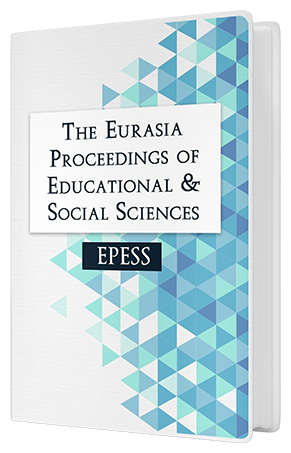Effect of Dark Triad Personality on Cyberbullying Behavior among Malaysian University Students
DOI:
https://doi.org/10.55549/epess.1192356Keywords:
Dark Triad, Machiavellianism, Narcissism, Psychopathy and CyberbullyingAbstract
Cyberbullying has become more prevalent in this age due to the increased usage of electronic gadgets, the Internet, as well as the personality traits of the aggressor. The purpose of this study is to examine the effects of Dark Triad personality traits on cyberbullying behaviour among university students. The personality model adopted in this study is the Dark Triad Model, which includes Machiavellianism, Narcissism and Psychopathy. This current study used a cross-sectional quantitative research design to collect data through online questionnaires. This study utilized the 9-Item Cyberbullying Offending Scale and the 12-Item Dirty Dozen scale to gather the data. A total of 400 samples from Malaysian public university students were selected based on the convenience sampling methods. The data were analyzed using descriptive and inferential statistics through SPSS version 27. The finding shows a low level of cyberbullying behaviour among Malaysian university students. The findings also indicated that all three dark traits (i.e. Machiavellianism, Psychopathy, Narcissism) are significantly correlated with cyberbullying behaviour. Meanwhile, the regression analysis indicates that both Psychopathy and Machiavellianism significantly positive affect cyberbullying behaviour. The study contributes to the existing literature by providing evidence from the Malaysian perspective, which is a collectivistic culture in nature. Additionally, the findings provide information to the stakeholders as guidelines for future intervention and prevention programs development for cyberbullying.Downloads
Published
Issue
Section
License
Copyright (c) 2022 The Eurasia Proceedings of Educational and Social Sciences

This work is licensed under a Creative Commons Attribution-NonCommercial-ShareAlike 4.0 International License.
The articles may be used for research, teaching, and private study purposes. Any substantial or systematic reproduction, redistribution, reselling, loan, sub-licensing, systematic supply, or distribution in any form to anyone is expressly forbidden. Authors alone are responsible for the contents of their articles. The journal owns the copyright of the articles. The publisher shall not be liable for any loss, actions, claims, proceedings, demand, or costs or damages whatsoever or howsoever caused arising directly or indirectly in connection with or arising out of the use of the research material. All authors are requested to disclose any actual or potential conflict of interest including any financial, personal or other relationships with other people or organizations regarding the submitted work.




